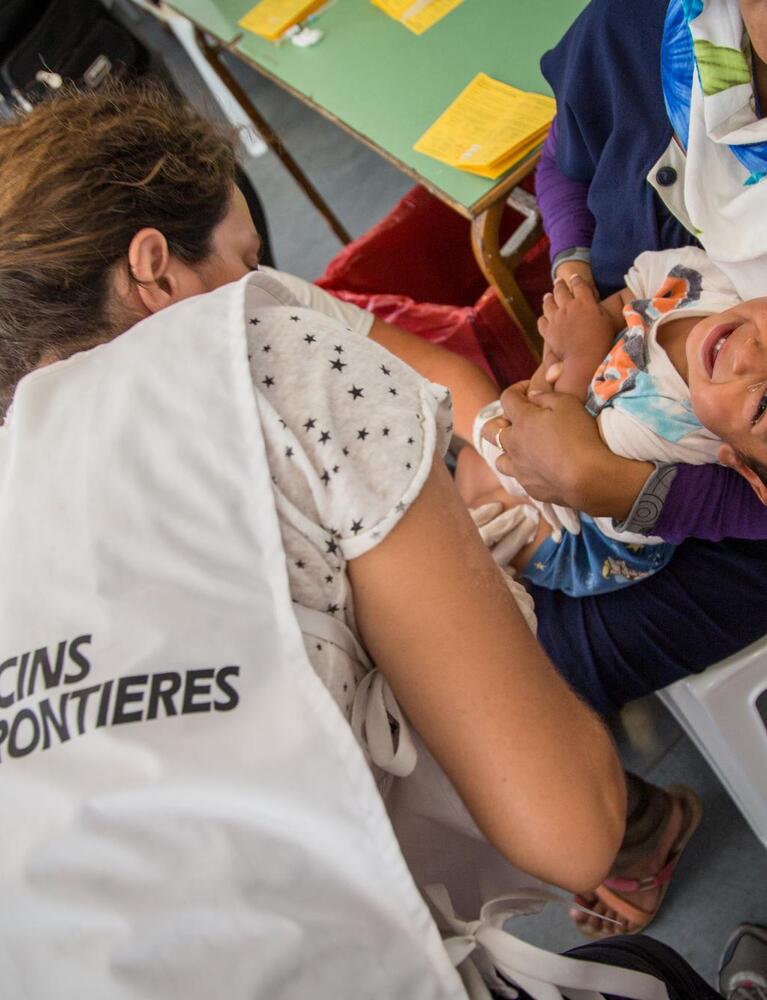Most people with viral hepatitis make a full recovery.
Others end up having it long-term and are at great risk of developing liver cancer.
Viral hepatitis causes swelling and inflammation of the liver. It is often initiated by infection with hepatitis A, B, C or E virus.
All four viruses produce a short term infection with some producing symptoms like fatigue, fever, loss of appetite and jaundice (yellowing of the skin).
The word is derived from the Greek hêpar, meaning "liver", and -itis, meaning "inflammation".
Hepatitis kills around 1.4 million people every year.
Hover of the image for an interactive guide to viral hepatitis

Hepatitis A
Hepatitis A is transmitted through food or water contaminated by an infected person’s faeces. The virus is often found in areas with poor hygiene and sanitation.
Infection most often occurs in children. Hepatitis A usually causes only a short term infection and is very rarely fatal. Most people can clear the infection on their own without needing treatment. Once recovered, some people develop a lifelong immunity.
[[Issues-Facts]]
Hepatitis B
Hepatitis B is transmitted by contact with an infected person’s blood or other body fluids. Hepatitis B can cause a long-term, or chronic, infection leading to a high risk of developing liver cancer and scarring of the liver, or cirrhosis. Both conditions can be fatal, with hepatitis B killing around 780,000 people a year.
[[Article-CTA]]
Hepatitis C
Hepatitis C is transmitted by contact with an infected person’s blood, often through the use of unsterilised needles. The infection can become chronic in up to 85 percent of those infected.
Most people infected with hepatitis C do not present with symptoms and the infection can remain undiagnosed until irreversible liver damage occurs and a liver transplant is needed.
Hepatitis E
Hepatitis E is transmitted by ingesting water contaminated by an infected person’s faeces. Outbreaks are often documented in places with poor sanitation, like camps for refugees and internally displaced people (IDPs). Hepatitis E commonly causes only a mild short-term illness.
Pregnant women are more likely to develop severe liver damage and in some cases the virus can be fatal. Médecins Sans Frontières/Doctors Without Borders (MSF) provides resources to battling and preventing hepatitis E in places such as Chad and Kenya.

Treating hepatitis
Short-term hepatitis A, B, and E infections do not often require treatment, but patients can be given supportive care like administering fluids if needed.
For chronic hepatitis B infection, antiviral drugs are used to reduce the risk of severe liver damage and increase chances of survival. But treatment is not accessible in many resource-poor settings.
Chronic hepatitis C infection is treated with pegylated interferon, an expensive and burdensome treatment. It can cause severe side-effects like depression, which often lead to people stopping treatment early.
Promising new oral treatments like sofosbuvir have been developed. They are more effective at combating the infection and do not produce as many side effects. However, these new drugs are unaffordable in resource-poor countries. MSF has advocated making hepatitis C treatment less costly and more accessible.
Preventing hepatitis
All hepatitis virus infections are preventable.
Hepatitis A prevention relies on access to clean water and functioning sewage disposal systems. MSF provides water and sanitation specialists in places like refugee and displacement camps.
Hepatitis B infection is most effectively prevented through vaccination against the virus. The vaccine is widely available and very safe. MSF has vaccinated against the virus in countries like the Democratic Republic of Congo and Liberia.
Hepatitis C prevention relies on reducing the risk of exposure to contaminated blood by promoting safe handling and cleaning of needles, as well as improving access to clean blood for transfusions.
Hepatitis E prevention relies on the same methods as hepatitis A, with MSF having responded to outbreaks of the virus in places like South Sudan.
Last reviewed: 12 January 2016



